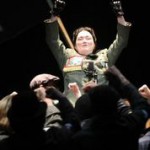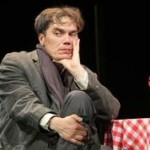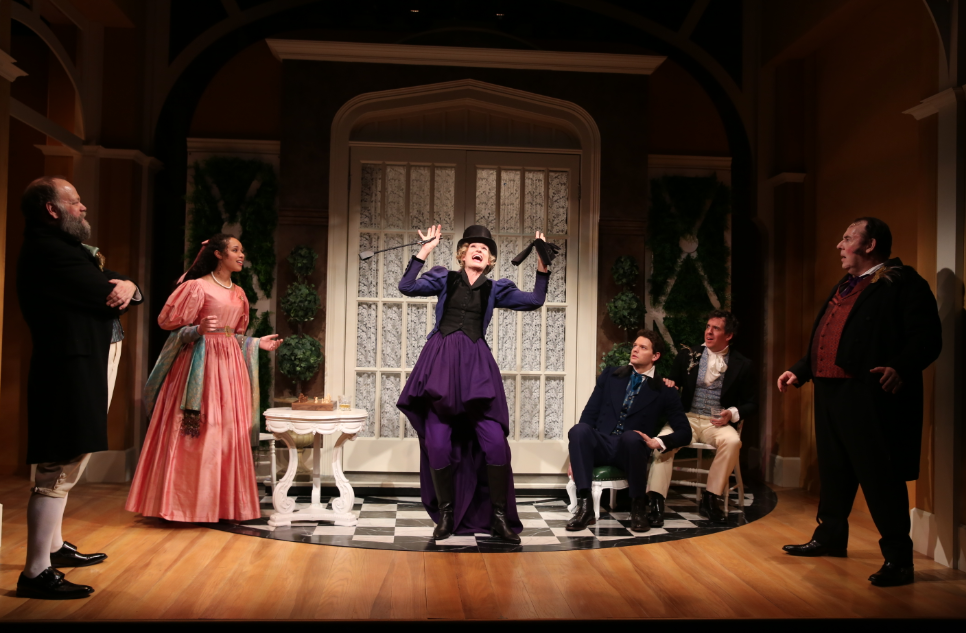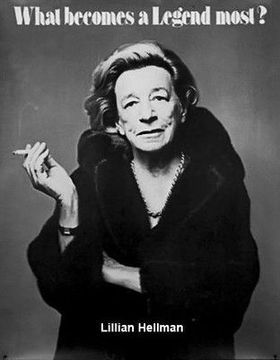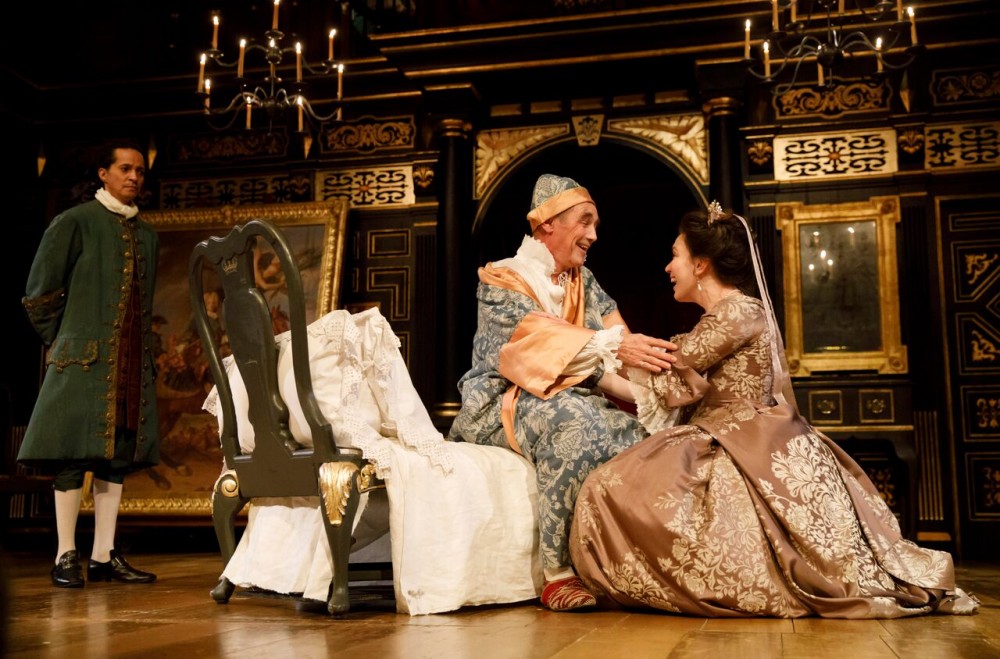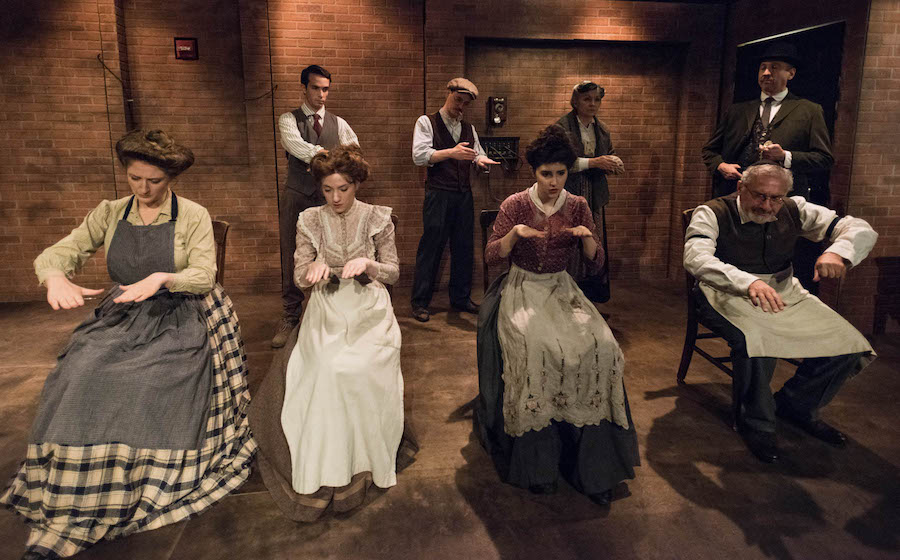NY Theater Review: JK Clarke
Too often in life we are presented with something wonderful, something absolutely perfect, that we could only have dreamed about, that we can’t wait to have, hold, touch, feel, use, etc. It may be a tangible thing (say, a new car) or intangible (love, parenthood, a long worked-for achievement). But it is not until we possess, or achieve these things, that we finally start to see their faults or imperfections. Such is the case with poor Berenger, our protagonist in Eugène Ionesco’s The Killer, now playing through the end of the month at Theatre for a New Audience in Brooklyn. Sometimes these flaws can be horrifying.
By riding to the end of the bus line, Berenger (Michael Shannon) has fallen upon a radiant city, an area within his own grey, damp chaotic city, that is paradise itself (is it, in fact, actually some kind of Eden?): always sunny; has the most beautiful flowers and lawns yet it never rains (“they’re watered from below”); is architecturally ideal; even the pebbles are beautiful. “A technological wonder!” our hero enthuses. But, of course, it is slowly revealed that it is all too good to be true. Once Berenger has committed to staying, The Architect (terrific straight man Robert Stanton) who has been showing him around the beautiful burg, finally reveals that there’s a bit of a problem: a serial killer has been murdering the radiant city’s citizens on a daily basis. It’s so common that the police have practically given up trying to catch the assailant. Berenger is devastated, but is chastised by the Architect (who by now has morphed into the Commissioner): “If you always dwell on what makes human beings unhappy, you wouldn’t be able to live.”
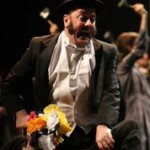

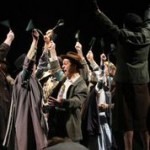

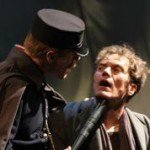

Theater for a New Audience’s beautiful new Polonsky Shakespeare Center, with it’s unusually high ceiling and deep, deep stage is the perfect space for The Killer. Matthew Richards’ amazing lighting design, along with Jane Shaw’s sound design (with voices and ambient sound emerging from all corners of the theater) and Suttirat Larlarb’s scenic design combine for a darkly minimalist, yet dramatic and full presentation. The sound, light and space are, in this instance (and as Ionesco wished it) an additional presence in the play, adding an entirely new dimension to the dialogue. Larlarb’s costume’s too, are both whimsical (including the presence of a . . . cell phone?) and period perfect, transporting us back to 1930s France.
One might say The Killer is about our collective (and personal) blind spots. We see what we want to see, and don’t stop to examine the whole until it’s too late, until we’ve already committed. What seems rosy and innocent at first may turn out to have something horrible lurking behind it—a murderer, the dark hand of fascism, or just general disappointment. Poet Lawrence Ferlinghetti may have had this in mind (perfectly encapsulating this play) when, in 1955, he wrote:
The world is a beautiful place/
to be born into/
if you don’t mind happiness/
not always being/
so very much fun/
if you don’t mind a touch of hell/
now and then (…)
The Killer. Through June 29 at Theater for a New Audience (262 Ashland Place, Brooklyn). www.tfana.org




